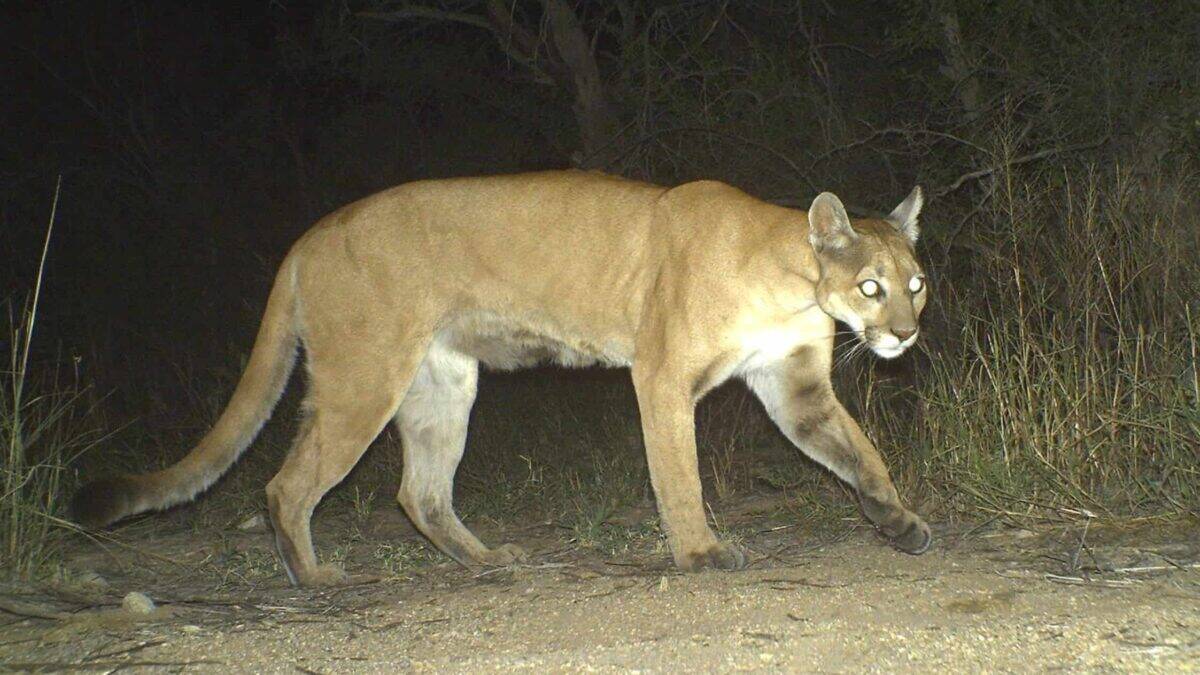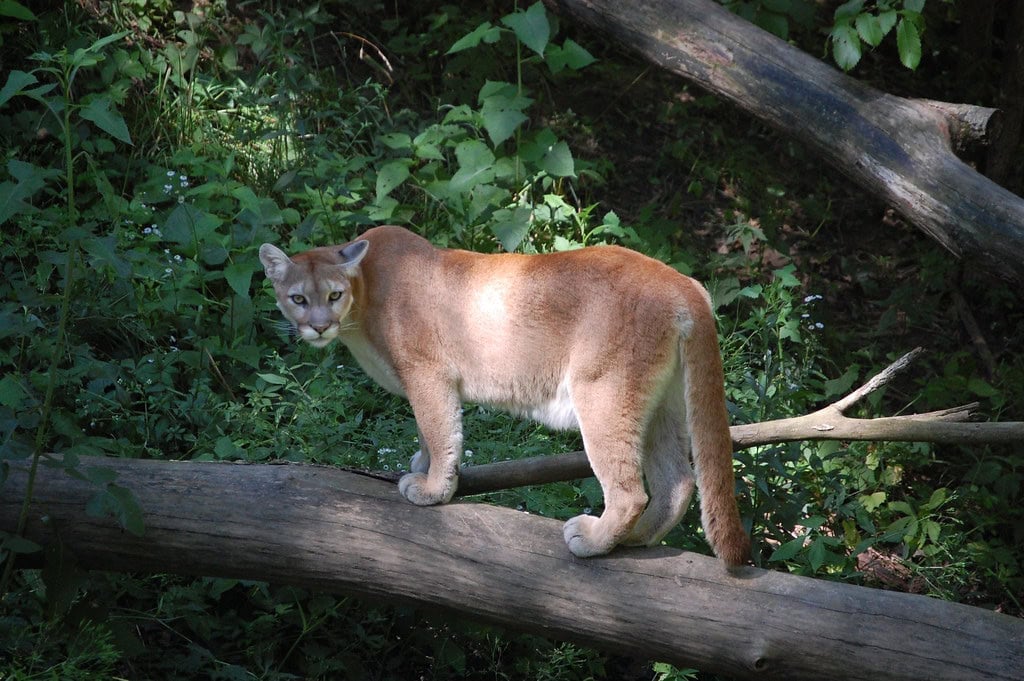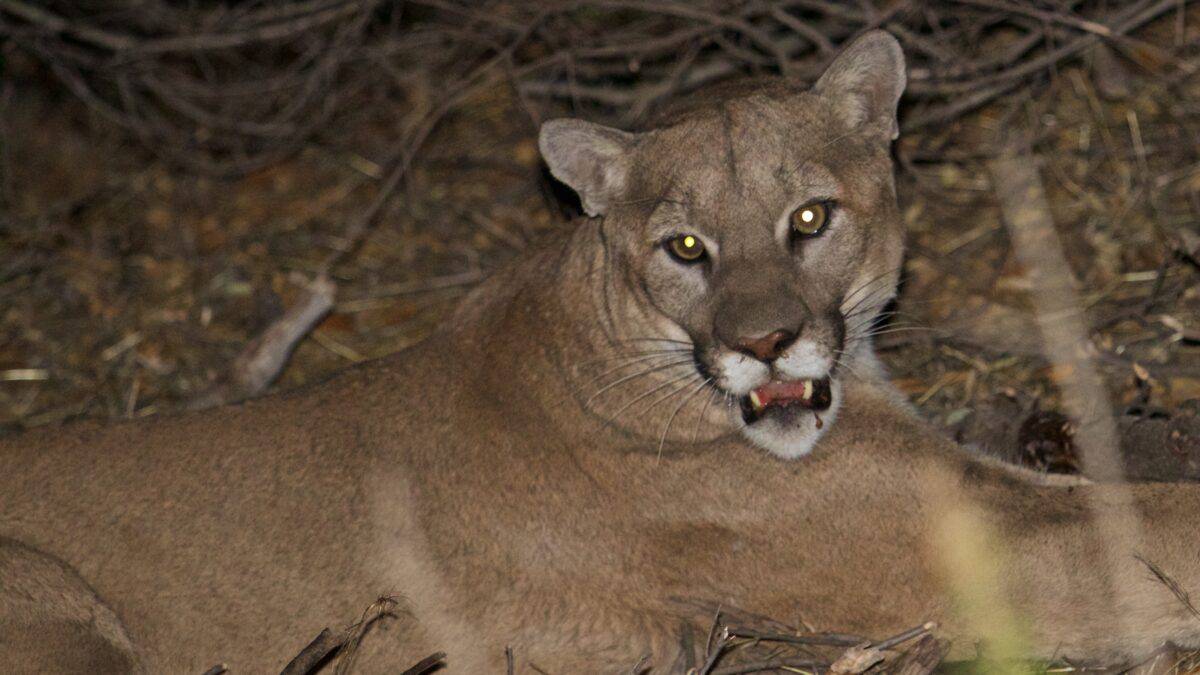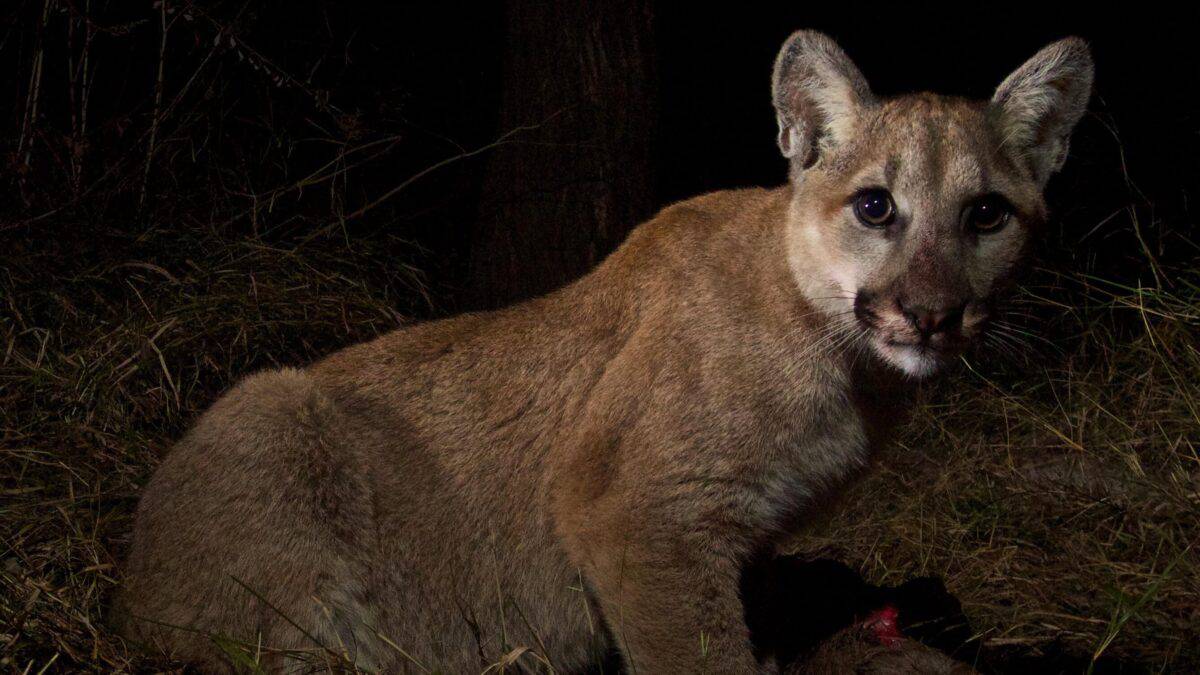Mountain lions, also known as cougars, pumas, or panthers, are among North America’s most elusive and majestic predators. These solitary big cats roam across various landscapes, from dense forests to arid deserts, yet spotting one in the wild remains an exceedingly rare privilege. While no national park can guarantee a mountain lion sighting, some offer better opportunities than others based on habitat suitability, population density, and conservation efforts. This article explores the national parks where visitors stand the best chance—however slim—of glimpsing these magnificent creatures, along with essential information about mountain lion behavior, safety, and conservation.
Understanding Mountain Lion Behavior and Habitat

Mountain lions are notoriously secretive predators that typically avoid human contact. These powerful cats are crepuscular, meaning they’re most active during dawn and dusk, though they may hunt at any time. They prefer rugged, rocky terrain with dense vegetation that provides cover for stalking prey and raising young. Their extensive territories can span 30 to 125 square miles for males and somewhat smaller areas for females.
These adaptable predators are found across diverse ecosystems, from mountains and forests to deserts and swamplands. They rely on adequate prey populations—primarily deer—and sufficient cover for hunting. Understanding their behavior is crucial for would-be observers; mountain lions typically move silently through their territory, leaving little evidence beyond occasional tracks, scat, or scratch marks on trees. The cats’ tawny coloration provides excellent camouflage, making them nearly invisible in dappled light or against rocky backgrounds.
Rocky Mountain National Park, Colorado

Rocky Mountain National Park’s diverse landscape of alpine meadows, dense forests, and rugged peaks provides ideal mountain lion habitat. The park’s healthy deer population offers a sustainable prey base for these predators. While sightings remain rare, the park’s extensive trail system through varied terrain increases the possibility of an encounter, particularly in less-trafficked areas during early morning or evening hours.
The best opportunities in Rocky Mountain National Park often come along the park’s western edge, where human visitation is lower and wildlife corridors connect to surrounding wilderness areas. The Wild Basin and Kawuneeche Valley areas have historically had more mountain lion activity. Park rangers occasionally report tracks in winter snow, offering visitors a glimpse into the presence of these elusive cats even when the animals themselves remain hidden. The park’s visitor centers provide current information on recent sightings and areas where mountain lions have been active.
Yellowstone National Park, Wyoming/Montana/Idaho

As America’s first national park, Yellowstone preserves over 2.2 million acres of wilderness that serves as prime mountain lion territory. The park’s northern range, with its abundant deer and elk populations, supports a healthy mountain lion presence. While wolves and bears often steal the spotlight in Yellowstone, patient wildlife watchers occasionally report mountain lion sightings, particularly in the Lamar Valley and around Mammoth Hot Springs.
Yellowstone’s open valleys provide rare opportunities for long-distance wildlife observation with spotting scopes. Winter months, when snow covers the ground, offer the best chance to spot mountain lion tracks or even the cats themselves against the white backdrop. The park’s ecosystem includes approximately 25-35 adult mountain lions, according to research estimates, though this number fluctuates with prey availability and competitive pressure from wolves and bears. Yellowstone’s wildlife biologists conduct ongoing research on the park’s mountain lion population, offering valuable insights into their behavior and distribution.
Grand Canyon National Park, Arizona

The Grand Canyon’s diverse topography creates multiple ecological zones that support mountain lions throughout the park. The remote North Rim, with its dense forests and smaller crowds, offers better opportunities for potential sightings than the more heavily visited South Rim. The canyon’s numerous side canyons and plateaus provide perfect hunting grounds and corridors for mountain lions moving through the landscape.
Park biologists estimate that 20-30 adult mountain lions call the Grand Canyon home, though their extensive territories mean individuals may range well beyond park boundaries. The cats are particularly drawn to areas with reliable water sources, such as springs and seeps along the canyon walls. Visitors hiking in the early morning along trails like the North Kaibab or in areas such as Powell Plateau should remain alert for signs of mountain lion presence. The park’s desert adaptation of mountain lions represents an interesting ecological variant of the species, specialized for the arid Southwest environment.
Big Bend National Park, Texas

This remote desert park along the Rio Grande provides essential habitat for one of the southernmost mountain lion populations in the United States. Big Bend’s varied landscape of mountains, deserts, and river corridors supports a relatively stable mountain lion population. The park’s isolation and low visitation numbers mean these cats face less human pressure than in many other protected areas.
The Chisos Mountains form the heart of mountain lion territory within Big Bend. Trails like the Window View or Boot Canyon occasionally yield sightings, particularly during cooler morning hours. The park maintains a database of mountain lion observations, with dozens of credible sightings reported by visitors and staff each year—a higher rate than many other national parks. Desert adaptations have given Big Bend’s mountain lions remarkable resilience, allowing them to survive in an environment where water is scarce and temperatures can be extreme. The park represents a crucial conservation area for maintaining genetic connectivity with mountain lion populations in Mexico.
Olympic National Park, Washington

Olympic National Park’s unique geography encompasses temperate rainforests, alpine meadows, and coastal environments—all potential mountain lion habitat. The park’s healthy Roosevelt elk population provides an abundant prey source, supporting a robust mountain lion presence, particularly in the densely forested valleys. The Hoh Rain Forest and Elwha Valley areas have historically shown consistent mountain lion activity.
Olympic’s mountain lions represent an interesting ecological case study, as they exist on a “peninsula of habitat” somewhat isolated from other large mountain lion populations. Recent research using wildlife cameras has documented mountain lion movement patterns throughout the park, revealing complex territorial behaviors. While the dense forest canopy makes sightings extremely challenging, visitors occasionally report glimpses of these cats crossing roads or trails during early morning hours. The park’s relatively wet climate means tracks are often visible in muddy trail sections, providing evidence of recent mountain lion passage even when the animals themselves remain unseen.
Glacier National Park, Montana

Glacier National Park preserves over one million acres of pristine habitat along the Continental Divide, supporting a diverse community of predators including mountain lions. The park’s remote backcountry areas, particularly around the North Fork and Many Glacier regions, offer the best opportunities for potential sightings. Glacier’s mountain lions share the landscape with grizzly bears and wolves, creating a complete predator guild rare in the lower 48 states.
The park’s population dynamics are influenced by seasonal prey movements, as deer and elk migrate to lower elevations during winter months. Mountain lions follow these prey species, sometimes bringing them into areas more accessible to human observation. Glacier’s connectivity with Canadian protected areas creates a vital international wildlife corridor, allowing for genetic exchange between mountain lion populations across the border. Visitors hiking in dawn or dusk hours along trails like Iceberg Lake or Highline should remain particularly alert, as these edge habitats between forest and meadow can be productive hunting grounds for mountain lions.
Zion National Park, Utah

Zion’s dramatic canyon landscapes provide vertical terrain advantage for mountain lions hunting desert bighorn sheep and mule deer. The park’s varied topography of narrow slot canyons, broad mesas, and riparian corridors creates diverse hunting opportunities for these adaptable predators. Areas like Kolob Canyons and the more remote sections of the park offer better opportunities for potential sightings than the heavily visited main canyon.
Zion’s mountain lions have adapted to the park’s unique desert ecosystem, often using elevation changes to their advantage when hunting. The presence of reliable water sources along the Virgin River and its tributaries helps sustain prey populations year-round. Research using GPS collars has revealed fascinating insights into how Zion’s mountain lions navigate the challenging vertical terrain of the park. These cats have been documented scaling nearly vertical cliff faces that would be impassable to most other large mammals. Winter months, when visitation is lower and some cats follow deer to lower elevations, may offer slightly better chances for sightings.
Saguaro National Park, Arizona

This desert park’s two districts flanking Tucson harbor a surprisingly robust mountain lion population adapted to arid conditions. The Rincon Mountain District (East) provides more extensive mountain lion habitat than the Tucson Mountain District (West), with higher elevations and more diverse vegetation communities. Saguaro’s mountain lions have adapted to the harsh desert environment, often focusing hunting efforts around limited water sources.
The park’s proximity to urban Tucson creates interesting management challenges as mountain lions occasionally venture into developed areas at the park’s boundaries. Despite this urban interface, the cats remain predominantly wild and elusive within park boundaries. Studies using wildlife cameras have documented mountain lions using desert washes as travel corridors, particularly during cooler nighttime hours. Visitors hiking in the park’s higher elevations, such as along the Douglas Spring or Tanque Verde Ridge trails, occasionally report sightings, particularly near dawn or dusk. The contrast between the iconic saguaro cactus landscape and these adaptable predators makes Saguaro National Park a fascinating study in ecological adaptation.
Great Smoky Mountains National Park, Tennessee/North Carolina

While the eastern mountain lion subspecies is officially considered extinct, credible sightings continue to be reported in Great Smoky Mountains National Park. These may represent western mountain lions expanding their range eastward or possible remnant populations that somehow escaped detection during extinction assessments. The park’s dense forests and abundant white-tailed deer provide suitable habitat should mountain lions return or remain in small numbers.
The remote, high-elevation areas of the park such as Cades Cove and Cataloochee Valley occasionally yield reports of large cat sightings, though confirmation remains elusive. Park biologists investigate reports and monitor for evidence through camera traps and track surveys. The ecological restoration of this eastern forest ecosystem has created conditions that could potentially support mountain lions again, as evidenced by the successful recolonization by other large predators like black bears. The possibility of mountain lions in the Smokies represents one of the most intriguing wildlife mysteries in the eastern United States.
Mountain Lion Safety in National Parks

While mountain lion attacks on humans are extremely rare—far less common than injuries from bees, dogs, or lightning—visitors to mountain lion country should understand basic safety protocols. If you encounter a mountain lion, make yourself appear larger by raising arms and opening jackets. Speak firmly in a loud voice, maintain eye contact, and never run or turn your back, as these actions may trigger predatory responses. Back away slowly while facing the animal, giving it space to escape.
Hiking in groups substantially reduces the already minimal risk of problematic encounters, as mountain lions typically avoid groups of people. Make noise while hiking to avoid surprising a cat, and keep children close within arm’s reach in mountain lion territory. If you’re camping in mountain lion habitat, store food properly and keep a clean camp. In the extraordinarily rare event of an attack, fight back aggressively using whatever is available—sticks, rocks, or even bare hands. Report all mountain lion sightings to park rangers, as this information helps with research and management efforts.
Conservation Challenges Facing Mountain Lions

Despite their adaptability, mountain lions face significant conservation challenges across their range. Habitat fragmentation from roads, development, and agriculture isolates populations and restricts movement corridors essential for genetic diversity. In many states, mountain lions are still subject to trophy hunting seasons, which can disrupt social structures and potentially lead to increased conflicts with humans when mature males are removed from the population.
Vehicle collisions represent another major threat, particularly where highways bisect mountain lion habitat. Conservation organizations and state wildlife agencies are working to address this through wildlife crossing structures, such as the landmark wildlife bridge over Highway 101 in California. Climate change presents additional challenges, potentially affecting prey distribution and availability. National parks serve as crucial refuges where mountain lions receive greater protection than on many multiple-use public lands, highlighting the importance of these protected areas for long-term conservation of the species.
Conclusion: The Privilege of Sharing the Landscape

The mountain lion remains one of North America’s most magnificent and misunderstood predators. While seeing one in the wild represents an extraordinary stroke of luck, simply knowing these animals persist in our national parks enriches the wilderness experience. Their presence indicates healthy, functioning ecosystems and reminds us that truly wild places still exist within our increasingly developed continent.
For those hoping to glimpse a mountain lion, patience, knowledge of habitat preferences, and early morning hiking offer the best—though still remarkably slim—chances. Remember that mountain lions have likely seen you many more times than you’ve seen them, slipping away undetected as they’ve done for millennia. Their continued presence in our national parks represents a conservation success story, even as challenges persist.
As visitors to their territory, we bear responsibility for coexistence through appropriate behavior and support for conservation initiatives. Whether or not you’re among the fortunate few to spot a mountain lion in the wild, appreciating these animals’ ecological role and supporting efforts to protect them ensures future generations will share landscapes with these remarkable predators. The true privilege lies not just in seeing a mountain lion, but in knowing we still share our world with such magnificent wild creatures.
- How Water Scarcity Could Spark Mass Migration in America - August 9, 2025
- Why Scientists Are Studying Sloth Fur for Medical Research - August 9, 2025
- New Ice Core Samples Could Rewrite Climate History - August 9, 2025

